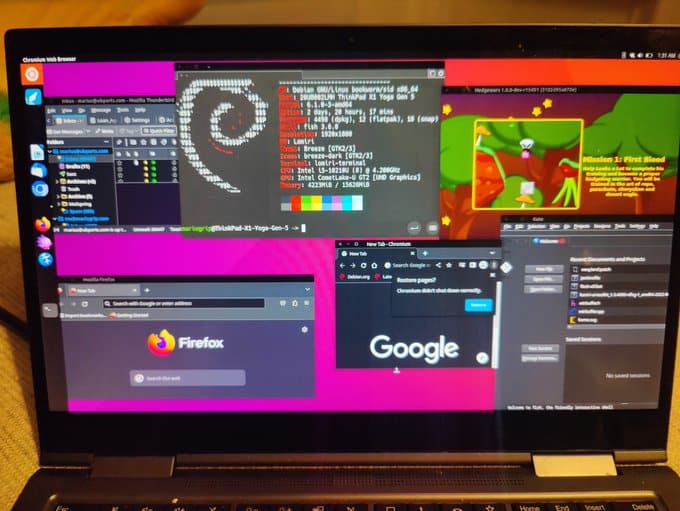
Lomiri on Debian is coming together and is finally in the official archive
Marius Gripsgard, the UBports project leader, which took over development of the Ubuntu Touch mobile platform and Unity 8 desktop after Canonical stepped aside, announced the integration of packages with the Lomiri environment in the "unstable" and "testing" branches of the Linux distribution Debian and the Mir 2 display server.
In the process to port Lomiri for Debian, removed or renamed deprecated dependencies, adaptation for the new system environment was carried out (for example, work with systemd was provided) and a transition to a new branch of the screen Mir 2.12 was made. server.
It is observed that the UBports leader consistently uses Lomiri on Debian and several minor changes are required to finally stabilize Lomiri.
Lomiri uses the Qt5 library and the Mir 2 display server, which acts as a Wayland-based composite server.

Combined with the Ubuntu Touch mobile environment, the desktopo Lomiri is in demand to implement Convergence mode, that allows you to create a mobile-responsive environment that, when connected to a monitor, provides a full desktop and turns a smartphone or tablet into a portable workstation.
With this came a lot of cleanup of older and outdated components. We also made sure to remove all Canonical and Ubuntu specific patches. With this, we open ourselves up to other distributions besides Ubuntu to use Lomiri.
While UBports originally used Mir, the requirements have now been modernized and updated.
What made it possible to introduce it into Debian was the effort we made to change the name and remove legacy dependencies. We also made sure it works with newer systems and made it work with systemd (and its components). We use Mir 2.12, that's upstream. We've worked closely with the Mir team to get the support we need in Lomiri, hence the Miroil library – this is a support layer, to add things that were removed in Mir 2.
If you are interested in knowing more about it, you can consult the details In the following link.
On the other hand, on the subject of Debian, it is also worth mentioning that recently the Debian developers have announced which they are testing a new non-free firmware repository, in which the firmware packages have been moved from the non-free repository.
The second alpha version of the “Bookworm” installer Debian 12 provides the ability to dynamically request firmware packages from a non-free firmware repository. The presence of a separate repository with firmware makes it possible to provide access to the firmware without including a common non-free repository on the installation media.
According to the previous general vote, official images include both free firmware from the main repository as proprietary firmware available previously through the non-free repository. If you have hardware that requires external firmware, the required proprietary firmware is loaded by default. For users who prefer only free software, at the download stage, an option is provided to disable the use of non-free firmware.
The necessary firmware is determined by analyzing the kernel logs, that contain warnings about failure to load firmware (for example, "failed to load rtl_nic/rtl8153a-3.fw"). The registry is analyzed by the check-missing-firmware script called by the hw-detect component.
When detecting firmware download issues, the script checks the firmware-content-index file, which matches the names of the firmware and the packages in which they can be found. If the index is missing, the firmware is searched through the contents of the packages in the /firmware directory. If a firmware package is found, it is unpacked and its associated kernel modules are loaded, after which the firmware package is added to the list of installed packages and the non-free firmware repository is activated in the APT configuration.